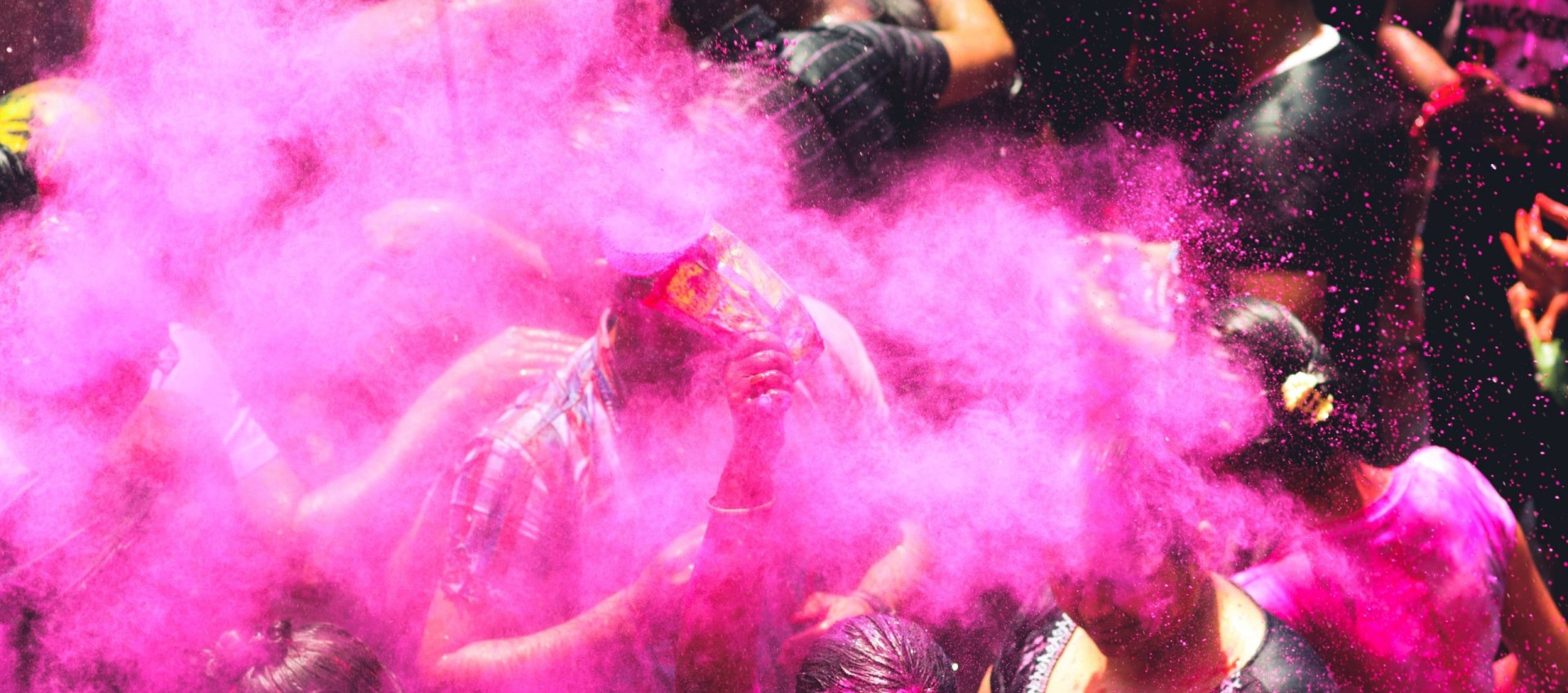Dipping a Toe into the Other Side of Holi
Let’s take it easy and only share forgiveness, love, and a bit extra tolerance with one another, instead of the sense of ‘touch’.
Share
The best part of being an Indian is that there are a lot of festivals (and we have enough holidays for family time!). While most social interactions have gone virtual since last year, the Holi celebration is not something that you could do over a video call!
The last time I saw an Indian explaining the Holi celebration on a global platform was when Priyanka Chopra was on Jimmy Fallon’s Tonight Show. For all the basic parts of the holiday (forget grudges and smear each other with colors), you could refer to that episode – because, in this blog, I am planning to talk about the lesser-known sides of the festival.
The legend of the Holi bonfire
First, let’s learn why we celebrate the victory of good over evil.
According to the scriptures, a king called Hiranyakashipu (who could neither be killed by man nor animal) demanded that everyone worship him as a god. His son, Prahlada, refused to follow this, which infuriated the king, and Prahlada was subjected to many cruel punishments. Finally, Holika, the king’s sister, tricked Prahlada into sitting on a pyre with her. She planned to protect herself with a cloak but planned to keep Prahlada exposed. As the fire was lit, the cloak flew from Holika’s body and encased Prahlada, saving his life.
Later, god appeared in a half man and half lion avatar and killed the king. Therefore, the Holi celebration begins with the Holika bonfire, which marks the end of evil.
The Actual Celebration
The next day after the Holi bonfire is the day when we play Holi.
Growing up, I had come to love Holi and the playful jitters it would give us when we would throw colorful water on each other right towards the beginning of spring. The first few splashes of cold water feel heavenly after months of bathing in hot showers during winter months. Even if it means catching a cold, the thrill is always worth it! We meet and greet friends and have homemade sweets while we play with colors.
Not undermining all the great memories I have of this beautiful festival, I cannot help but tell the tale of the less popular sides of Holi. Applying and smearing random colors on people is synonymous with the sense of ‘touch’.
As I grew older, my parents and relatives began to warn against allowing random people to touch us in the name of putting on colors. “Good touch, bad touch, ugly touch, and loving touch”, we were taught to identify early in the girls’ school that I studied in and that became the foundation of our Holi games.
At university, there were many women from the remotest parts of India who did not even know how Holi is played, and they would hide in hostels to avoid the colors and color attacks by random strangers.
While over the years, identifying touch almost becomes our second nature; women tend to feel harassed when random strangers throw water-colored balloons and water a few days before the festival and shout “Holi Hai” (it's Holi!). So, in case any of our colleagues need an extra day off close to the festival, they might just want to avoid over-enthusiastic people on their way to the office!
So, in case any of our colleagues need an extra day off close to the festival, they might just want to avoid over-enthusiastic people on their way to the office!
Holi touch needs consent too
Giving the right conclusion to this tale might be as difficult as figuring out the right way of celebrating Holi this year since COVID has banned all touches for now. But there are still many reasons to address the evils that prevail, irrespective of the pandemic. Touch is a universal issue; we tend not to address the bad in the good festivals out of social obligations. It is important to discuss touch with respect to Holi, and by default, addressing touch in general.
While we celebrated women early this month, let’s also highlight with the same voice that Holi touch and Holi games need consent too.
And there are more reasons not to go to extremes with our playful moods of the festive season. Many current evils need to be addressed and corrected, including the attacks that Asian and Black communities are experiencing on a global scale.
Consent creates an equal relationship – it shows that both parties have power. It demonstrates that neither party can take or give unless the other party allows it – and through this, solidarity and partnership can be achieved. True joy can be felt by everyone during our most exciting holidays, and during this time we can celebrate that evil has ended.
So, during this Holi festival, let’s take it easy and only share love and a bit extra tolerance, instead of the sense of ‘touch’ with our friends, coworkers, colleagues, and family members. The rest can be addressed on the next Holi celebration in a hopefully COVID-free world when we can freely, and with consent, throw colors on one another!
Wish you a Happy and Peaceful Holi!









